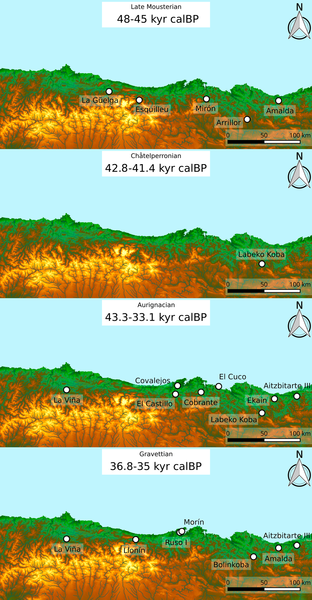Neanderthals and modern men lived together for only a thousand years in the Cantabrian area

The study has been published in the journal PLOS ONE and, according to Marin, its main objective was to “clarify if there was any relationship between these two species and to what extent the arrival of modern man influenced the disappearance of the Neanderthals, in the Cantabrian area”.
In fact, the Cantabrian area is, throughout Europe, one of the richest archaeological heritage of the transition between Neanderthals and modern man, from the Basque Country to Asturias. However, the dating of the deposits was not accurate. Thus, in this study 51 dates have been made in 13 sites in which both species lived. The Basques are: Axlor, Bolinkoba, Ekain, Amalda and Aitzbitarte III.
“The bones of the animals eaten by both species have been dated. With the method used, carbon 14 ultrafiltrated AMS, we have discarded all the remains of pollution and analyzed the dates using the Bayesian model, as in the Cave of Labeko Arrasate”, explains Marín. This methodology has been applied for the first time in Europe at this time. This has allowed us to define with guarantees the chronology of the transition: “In this sense, this research has marked a milestone.” For example, they have realized that some deposits were misdated, some even imputed to a wrong species. “We have found remains of the last Neanderthals in the cave of Amalda,” he said.
From there conclusions have been drawn on the way of life and evolution of the two human groups. Among other things, Marín has highlighted the need to investigate in depth the conditions of the place: “We know that Neanderthals had very rich technical, organizational and cultural skills that they transmitted from generation to generation, and this work has shown us that they did not disappear at once throughout Europe, but in some places before and in others later. In the Cantabrian area, the Neanderthals and modern humans spent little time together, so we must know the conditions of the place to clarify the keys to their disappearance.”
Therefore, they have already begun to analyze the climatic and environmental conditions of the last Cantabrian Neanderthals. “To do this, we analyze the stable isotopes of the bones of the animals they ate, since they inform us directly of the conditions in which they lived, and therefore of the Neanderthals,” said Marin.
Buletina
Bidali zure helbide elektronikoa eta jaso asteroko buletina zure sarrera-ontzian











